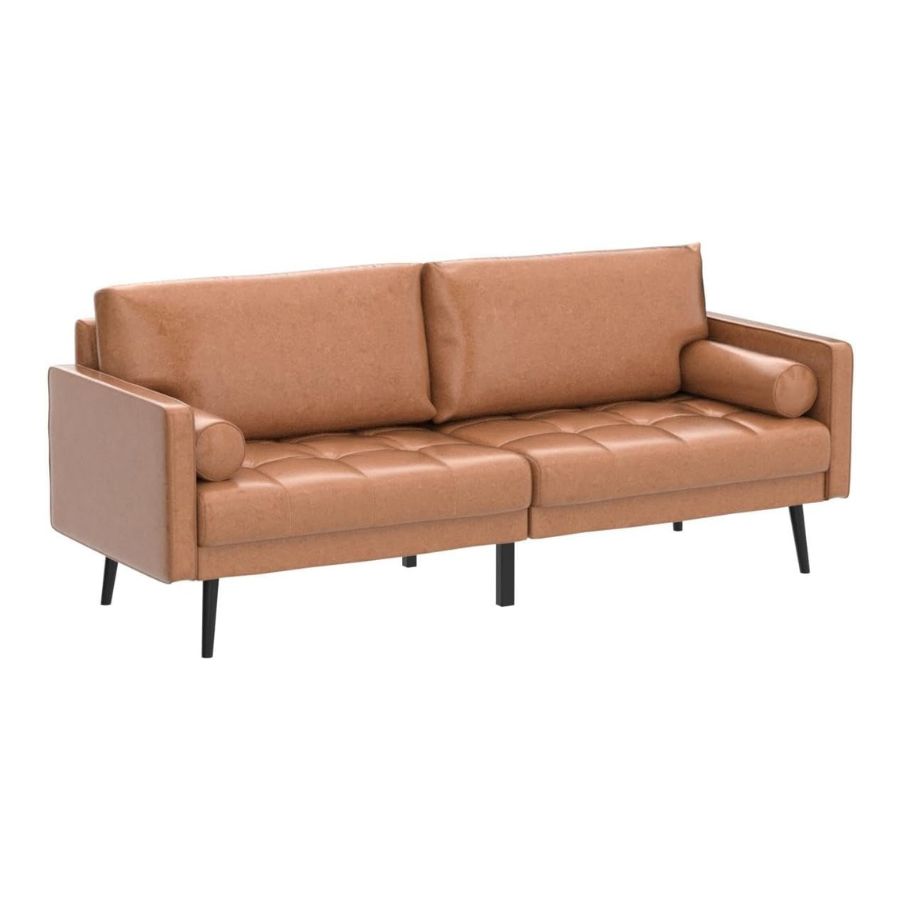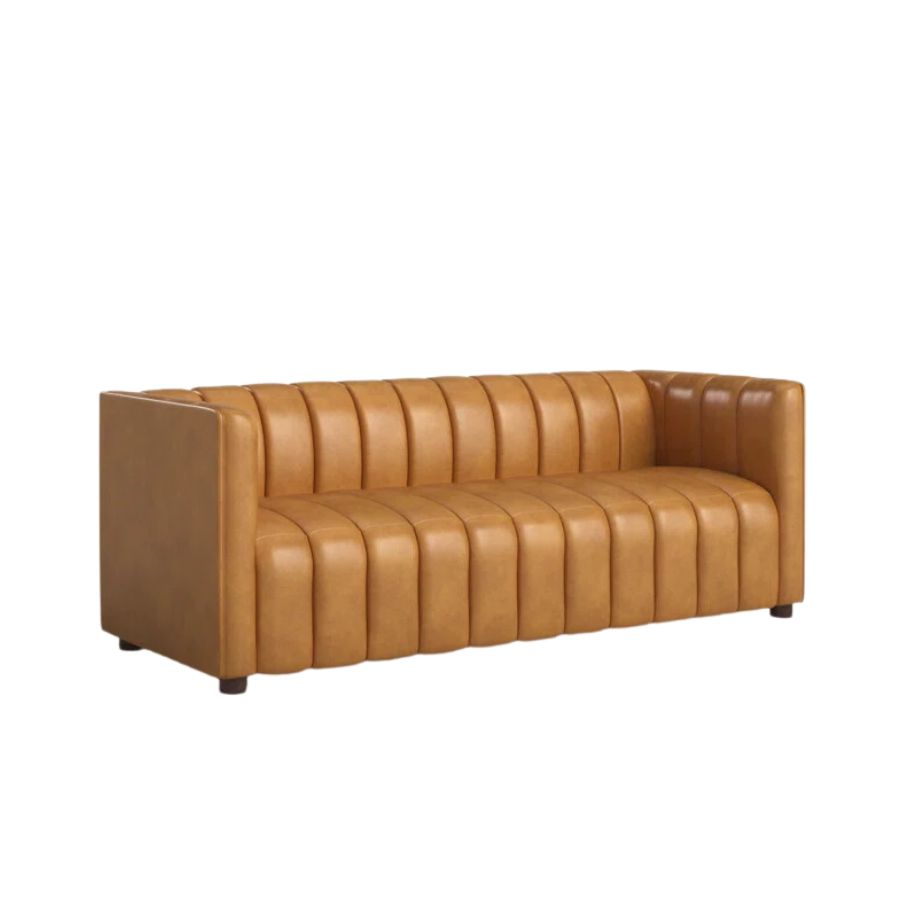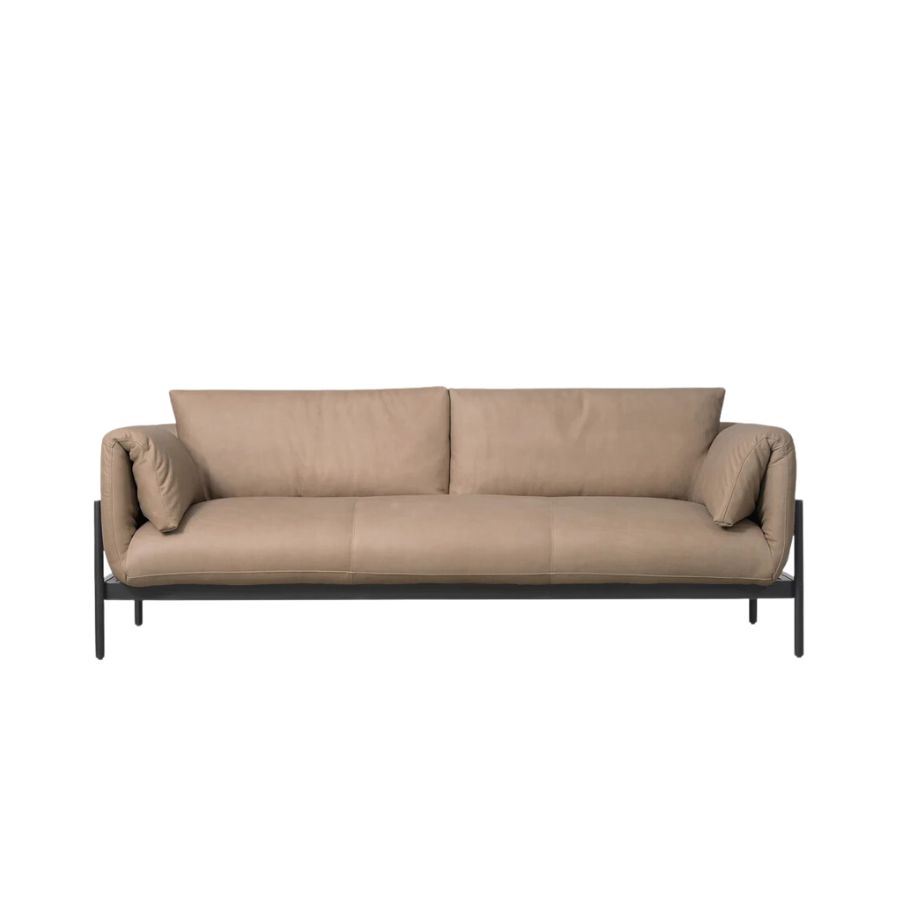Are Leather Sofas In Style? Designers Reach a Surprising Conclusion on This Long Lasting Living Room Trend
Leather sofas are seeing a real renaissance. Designers share why that is, and the best way to style them in a modern way
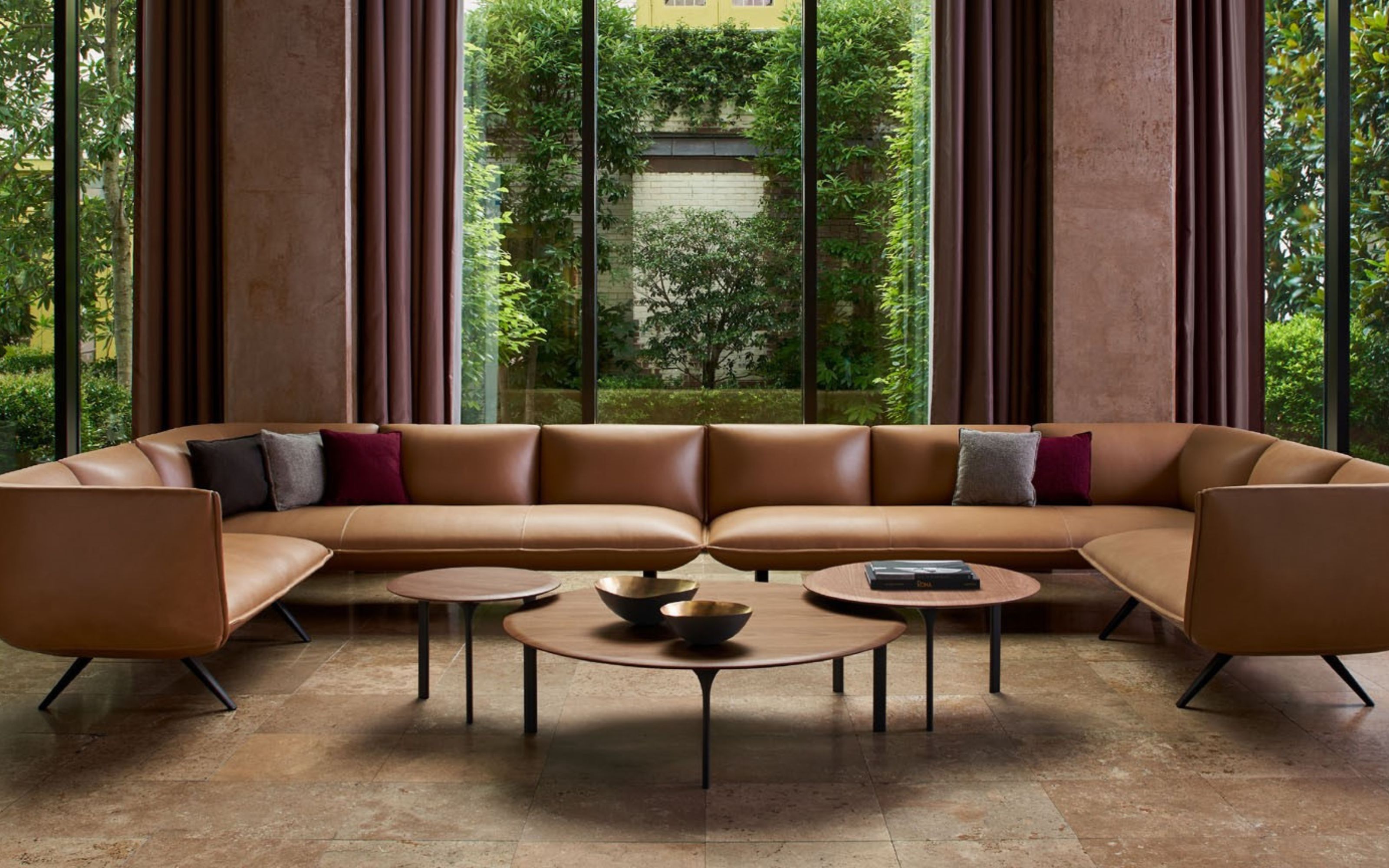
We thought the leather sofa trend was put to rest a good decade ago. It’s had its numerous, varying iterations and we thought we saw it all. But recently designers have been rediscovering ways of working it into the most stylish interiors, and it seems it’s only the beginning of this item’s renaissance.
When asked, interior experts all agreed that there is a certain element of 70’s nostalgia around the look of a leather sofa, especially one with a beautifully aged texture that gives it character. Comfort and the warm feel that its natural color adds to a space were also amongst the reasons why we’re still not over this piece of furniture that always seems to reinvent itself and can, in the truest sense, be called a design classic, with soft browns topping the sofa color trends list of 2024 too.
Why are we seeing a renaissance of the leather sofa?
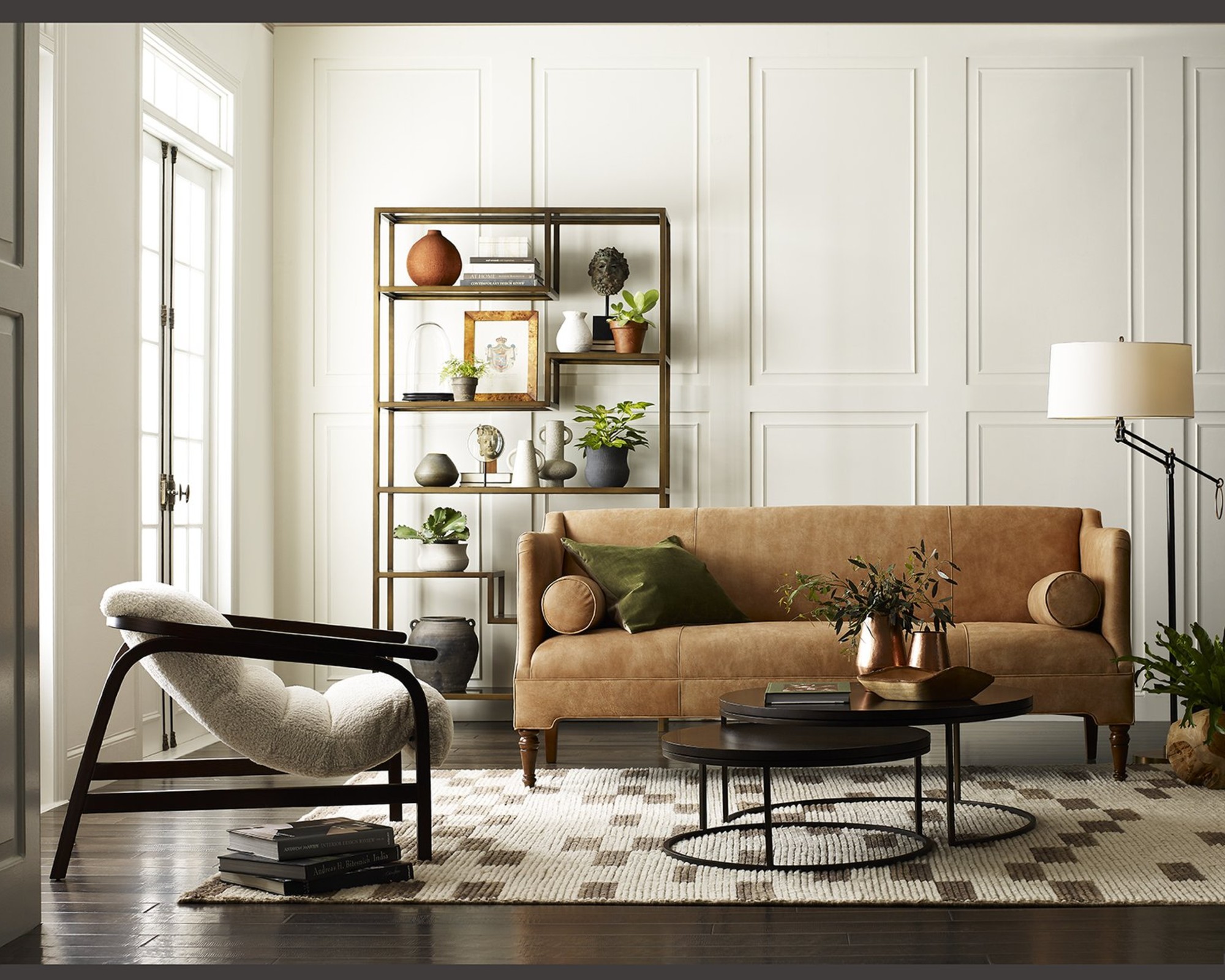
Whether at the height of their popularity or not, leather sofas have always been around, in one shape or another. They are now having a resurgence and it’s all due to their classic, adaptive look, and the warmth and sophistication they bring to a space. ‘There is nothing quite like sinking into a high-quality leather sofa. The way it envelops the body and offers unparalleled comfort is truly special,’ says interior designer and architect Martha Franco. ‘Leather is a noble material that exudes timeless elegance, adding a touch of sophistication to any space. I have always appreciated leather sofas for their enduring style, durability, comfort and easy maintenance. Leather sofas are versatile, making them an ideal choice for a wide range of interior design preferences,’ adds the expert.
Kathryn Hygge, Design Director at Bernhardt Textiles, thinks leather sofas will continue to withstand the test of time, and interior designer Isy Runsewe agrees: ‘I don’t think leather ever went out of style,’ she says. ‘Leather is the designer's standby, it provides the essential ingredient for defining a style. From battered vintage to sleek Italian modernism, from country cottage to Manhattan penthouse, leather is the ultimate signifier,’ Martin Waller, founder of global design house, Andrew Martin, tells me.
‘Lately, our interiors are returning to an earthier flavour. People are thinking of that classic, cognac-colored full grain leather that looks great with a thousand scuffs. There’s beauty in that imperfection; as more and more people embrace wabi sabi (the Japanese aesthetic centred around the acceptance of imperfection), it’s unsurprising that leather should be popular again,’ says interior designer and co-founder of designer marketplace Daniel House Club, Peter Spalding.
How should you incorporate a leather sofa in your design?
1. Choose neutral tones
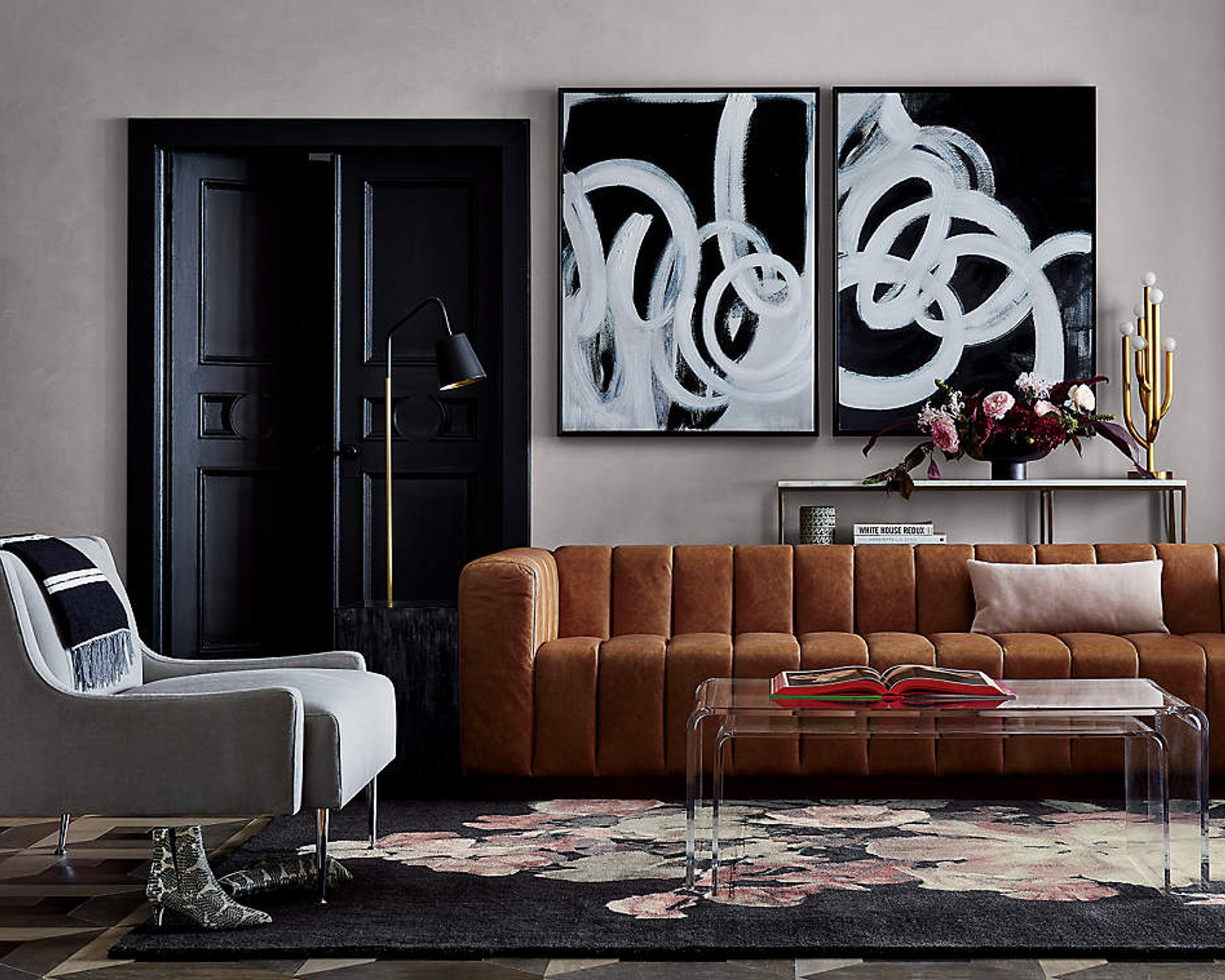
Designers agree that the most best tones for the best sofas are neutrals. They emphasize a good quality material and have a timeless aesthetic. ‘When choosing a leather sofa, neutral tones like tan, beige, brown and gray are popular for their natural look and ability to blend with any room décor,’ explains Martha.
Isy advises to steer clear of black and opt for natural colorways and matte finishes instead. ‘Taupe and brown tones are chic and keep the upholstery from feeling outdated. Leather sofas effortlessly blend sophistication with comfort and functionality, making them ideal for nearly any aesthetic,’ she adds.
The Livingetc newsletters are your inside source for what’s shaping interiors now - and what’s next. Discover trend forecasts, smart style ideas, and curated shopping inspiration that brings design to life. Subscribe today and stay ahead of the curve.
Peter isn’t keen on black or white either, and agrees that nothing beats a warm, cognac tone: ‘I’m not nuts about black or white leather - too cool in feel and too many fashion connotations to pull off easily. Cognac is probably my favorite color,’ he tells me. Kathryn tells me neutral colors are currently very fashionable, and adds that darker colors, however, stain less so would make a great choice for well-used areas.
2. Pick a good quality leather that will age well

The quality of your leather sofa’s finish can completely make or break the look of your design. A good quality leather will age and show its imperfections beautifully, while a shiny texture will only look battered and bruised with time. Isy tells me that it’s very important to pick the right tone and finish: ‘My advice is nothing shiny,’ she says.
‘High-quality leather not only withstands wear and tear but also develops a unique patina over time, adding to its charm and character,’ Martha tells me, continuing to point out the attributes of quality leather: ‘Leather sofas are renowned for their comfort, with the ability to adjust to room temperature, offering a cool seating experience in the summer and a cozy warmth in the winter. Additionally, as leather ages, it becomes even more supple and comfortable, making it a timeless choice for any home,’ she explains.
Peter actually uses the aged look of a leather sofa as an element in his designs. ‘I really only go for leather that is actually going to scuff and age. I think that’s the reason I would bring it into a room - to provide a sense of age,’ he tells me. ‘Scuffing aside, leather is an incredibly durable material. A nice leather sofa could go on indefinitely,’ he adds, making a point about the importance of investing in a material that can last a lifetime.
3. Stay environmentally conscious
Environmentally conscious leather is the best option to go for. ‘When using an environmentally conscious leather supplier it is quite a sustainable product,’ Kathryn tells me. ‘Our leathers are sourced sustainably, with non-toxic tanning materials and excellent filters that clean the water after dying the leather. When properly cared for, the lifetime of leather is much longer than other materials because leather lasts, it is a good environmental option because we are putting less furniture in landfills if we keep it for longer,’ she explains.
4. Mix with a variety of other textures
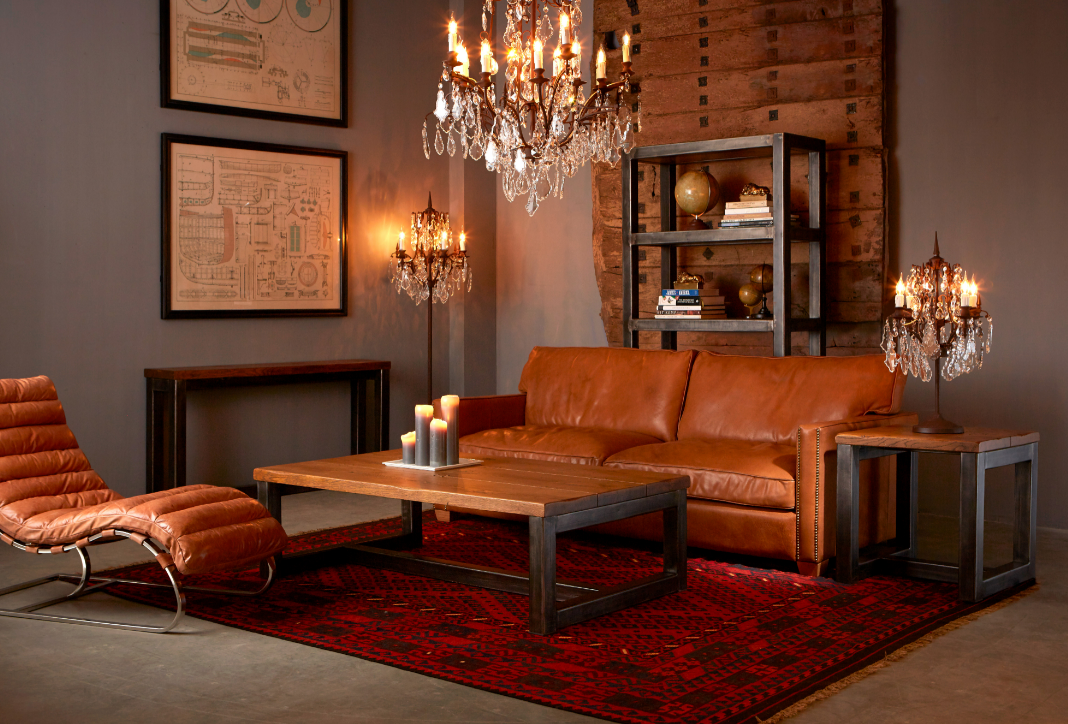
Leather is very versatile as a material and it will look good in plenty different combinations. ‘Leather mixes very well with other materials….wools, suede, velvet, and other fabrics too,’ tells me Kathryn. ‘Leather sofas work especially well accented with rugs and carpets to add an interesting variety of materials to an interior,’ she adds.
Martha thinks leather sofas fit seamlessly into both formal and informal spaces. ‘They effortlessly complement various room styles and design elements, including wood, metal, or fabric, creating a visually appealing and harmonious atmosphere. Mixing textures, such as leather with other materials, adds depth to the overall design,’ explains the designer and architect.
However, Martin warns against overdoing the leather look, and advises to keep a balanced approach: ‘It does not mean you should fill a whole room with it. All you need is a leather sofa or accent chair to bring a touch of relaxed sophistication into the home,’ he says. Peter highlights another point to consider, and says that leather sofas won’t work in a space if there’s nothing of equal ‘gravity’ to support them. ‘It’s a real material and it should be supported by other real materials - beautiful wide plank solid oak floors, stone fireplace…’ he says.
Raluca formerly worked at Livingetc.com and is now a contributor with a passion for all things interior and living beautifully. Coming from a background writing and styling shoots for fashion magazines such as Marie Claire Raluca’s love for design started at a very young age when her family’s favourite weekend activity was moving the furniture around the house ‘for fun’. Always happiest in creative environments in her spare time she loves designing mindful spaces and doing colour consultations. She finds the best inspiration in art, nature, and the way we live, and thinks that a home should serve our mental and emotional wellbeing as well as our lifestyle.
